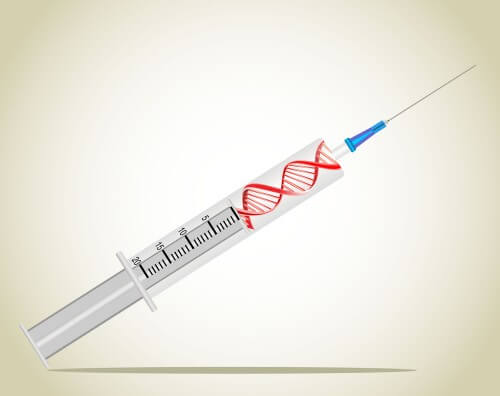Mapping the attachment sites of RNA molecules shows that these configurations create another code, which helps the protein production process

The DNA strands in the genome are arranged to form a double helix shape, but what about the single-stranded RNA molecules that are copied from them? The chemistry of the "letters" of the RNA sequence also signals them to look for a partner - which may be another letter on the same molecule. As a result, the RNA strand curls and sticks to itself in hairpin-like formations. New research carried out jointly by scientists at the Weizmann Institute of Science and Stanford University, which was recently published in the scientific journal Nature, showed that these formations have many roles. It seems that they function as a kind of "marking" on the genetic code itself, thus helping the protein production mechanisms in the cell to read it.
In one of the most comprehensive studies done on the structure of RNA in human cells from Jaffa Prof. Eran Segal And research student Ohad Menor, from the Department of Computer Science and Applied Mathematics and the Department of Molecular Biology of the Cell at the Weizmann Institute, together with Prof. Howard Chang from Stanford University, the total array of RNA configurations in the cells of three people. The scientists used a method they developed in 2010, on which a patent was registered, that allows to locate the regions of the RNA sequence that stick together, and those that remain free. This is a statistical method, which gives a "score" to each region of RNA, according to the chance that it will match and stick to another region. An examination of over 160 million RNA segments from each person - amounting to thousands of RNA molecules - made it possible to create a topographic interaction map of the array of RNA molecules in the cell.
"When we looked at the graphic processing of the 'sticking scores', several things immediately stood out," says Prof. Segal. "For example, we could see very clearly the sharp slopes at the 'start' and 'stop' points of the garden, which delimit the area of its activity." These gradients - which indicate unconjugated areas in the folded strand - are the bends of the "hairpin" and the protrusions in the structure of the molecule. The scientists discovered other types of "symbols" in the folded RNA, for example, in the areas where the cellular machinery cuts the RNA sequence. According to Prof. Segal, this marking, which can be compared to Braille, may be useful for mechanisms such as the ribosome (which produces proteins according to the RNA sequence), because it can easily find its place on the long molecule, without having to search for the set of letters (nucleotides) that is appropriate. In fact, the markings that the RNA folds create may constitute an additional code to the triple codon that marks the amino acids. For example, all binding scores indicated a pattern of strong coupling every three nucleotides, which may mark the start of a codon for a new amino acid.
The three samples were taken from a pair of parents and a child, a fact that allowed the scientists to ask a number of questions concerning the RNA configuration and heredity. For example, each of us carries tiny variations of one or two letters, scattered throughout our genome, known as "single nucleotide polymorphisms" (SNPs). How does the substitution of a single nucleotide affect? Comparing the conjugation scores of the mother, the father and the child showed that the configuration of about 15 percent of the RNA molecules containing sequences SNPwas significantly different in the three samples; That is, to the extent that it can have a significant effect on the function of the protein formed from them. The scientists called these formations by name RiboSNitches.
The team of scientists marked theRiboSNitch which were located on the RNA map they created. The locations where the alternative RNA sequences were located indicated that the RiboSNitch may play a crucial role in regulating the process in which the genetic code is translated into protein. Their location on the map further suggests that some of theRiboSNitch May be involved in important biological processes, thus helping in the future in understanding various disease processes.

